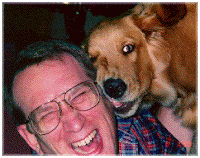updated 17 October 2015
 |
| <PREVIOUS PAGE ~ index ~ NEXT PAGE> |
 |
| An additional trade card for H.B. Cook is found on page 157 of the Earl J. Arnold Advertising Card Collection |
 |
| "clear the track" |
 |
| Note some of these facial expressions. Some kids are concentrating on their work. One looks annoyed, another, mischievous. |
 |
| "childrens' delight" |
S.D. Sollers & Co. manufacturers of children's fine shoes, 417 Arch St., Philadelphia PA
Card printed by William Boell, Photographic, Lithographic, Drawing, Engraving & Printing Office. W. Boell. Practical Lithographer, 311 Walnut Street, Philadelphia.
Card printed by William Boell, Photographic, Lithographic, Drawing, Engraving & Printing Office. W. Boell. Practical Lithographer, 311 Walnut Street, Philadelphia.
S.D. Sollers commissioned many trade cards, including a series of alphabet cards. Here's a sampling of them discovered on Google Image Search:
S.D. Sollers was among many who exhibited their products on the occasion of the centennial of the United States, as per this Google Books report:
We need to take a second look at one of these cards. What's portrayed here?
 |
| "Sollers & Co's Minstrels" |
The Minstrel was a form of entertainment that originated in the America of the 19th century. Even contemporaries found it to be racist. Wikipedia gives a good explanation of the minstrel show and the roles of "Tambo" and "Bones" from which I quote below. Minstrels were forerunners of vaudeville, the Ed Sullivan Show, etc. in the 20th century and the 21st century evening TV programs such as "The Tonight Show." Wikipedia notes:
"Slave characters in general came to be low-comedy types with names that matched the instruments they played: Brudder Tambo (or simply Tambo) for the tambourine and Brudder Bones (or Bones) for the bone castanets or bones. These endmen (for their position in the minstrel semicircle) were ignorant and poorly spoken, being conned, electrocuted, or run over in various sketches. They happily shared their stupidity; one slave character said that to get to China, one had only to go up in a balloon and wait for the world to rotate below. Highly musical and unable to sit still, they constantly contorted their bodies wildly while singing.
"Tambo and Bones's simple-mindedness and lack of sophistication were highlighted by pairing them with a straight man master of ceremonies called the interlocutor. This character, although usually in blackface, spoke in aristocratic English and used a much larger vocabulary. The humor of these exchanges came from the misunderstandings on the part of the endmen when talking to the interlocutor:
- Interlocutor: I'm astonished at you, Why, the idea of a man of your mental caliber talking about such sordid matters, right after listening to such a beautiful song! Have you no sentiment left?
- Tambo: No, I haven't got a cent left.
Tambo and Bones were favorites of the audience, and their repartee with the interlocutor was for many the best part of the show. There was an element of laughing with them for the audience, as they frequently made light of the interlocutor's grandiose ways."
For a good summary of racist stereotypes in American media, the use of such stereotyping across many racial boundaries and how such a shortcut in our understanding of "others" has given us "permission" to behave like barbarians (yet another stereotype, I'm afraid) I highly recommend Ken Padgett's site,
 |
| http://racist-stereotypes.com/ |
 |
| "There was an old woman who lived in a shoe. She had so many children, she knew not what to do...." (except buy more shoes, evidently) |
The rest of the story
was really quite gory.
So...we'll tell it all here
and bathe in the glory.
With litters of children
and generations to come,
she evicted her husband
as he was a bum,
Thus dispelling the myth
told in perpetuation
she knew not what to do
in her situation.
--Wretched Poet
 |
| from Library of Congress Title: J.O. Whitehouse's boot and shoe factory, Poughkeepsie, N.Y. / The Major & Knapp Engr. Mf'g & Lith. Co., N.Y. Summary: Exterior view of factory; wagons and other street commerce in foreground. Contributor Names: Major & Knapp Engraving, Manufacturing & Lithographic Co. Created / Published New York : [187-] |
J.O. owned a newspaper! (Google Books):
...and bred a trotting horse! (Google Books):
The author of this blog has attempted to correctly apply terms and conditions to Content. These pages and associated images are being made available exclusively for use in non-commercial and non-profit study, scholarship, research, or teaching . Researchers are responsible for using these materials in accordance with Title 17 of the United States Code and any other applicable statutes. All trademarks, service marks, trade names, trade dress, product names and logos appearing on this blog are the property of their respective owners.. In the event that any Content infringes your rights or Content is not properly identified or acknowledged please email me. Thanks!
This site includes historical materials that may contain negative stereotypes or language reflecting the culture or language of a particular period or place. These items are presented as part of the historical record, and do not represent or in any way reflect the personal views of the author of this blog, his ancestors, or his family.
This site includes historical materials that may contain negative stereotypes or language reflecting the culture or language of a particular period or place. These items are presented as part of the historical record, and do not represent or in any way reflect the personal views of the author of this blog, his ancestors, or his family.
 |
You'll "catch my ear"
--if you comment here--
|









Comments